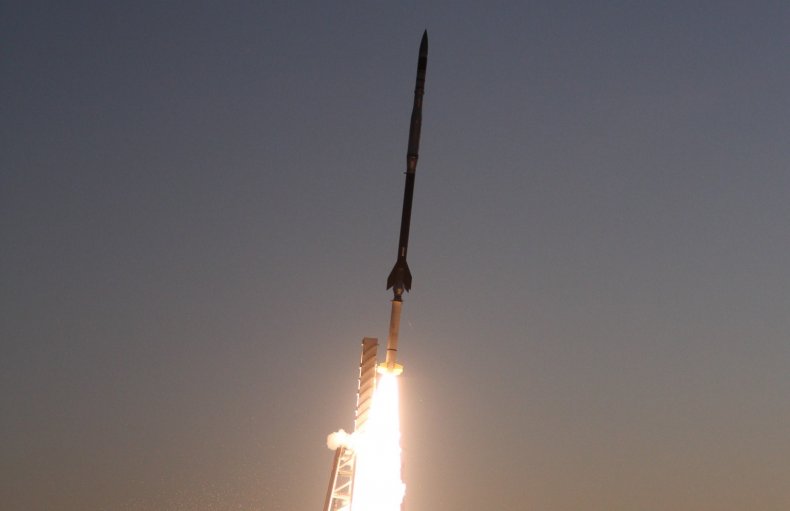Watch Video of NASA Rocket Launch From Wallops Island After Days of Delays
Photos and video clips of the Black Brant XII launch from NASA's Wallops Flight Facility have emerged on social media.
The small rocket, specifically designed to allow scientists to conduct on-board experiments, launched on May 16 at 8:44 p.m. EDT.
NASA took to Twitter to share one of the first photos of the launch, which shows the rocket accelerating away from the launch pad. Other users then replied with photos of their own, and footage was posted to YouTube.
First photos are in! 🤩
— NASA Wallops (@NASA_Wallops) May 17, 2021
A Black Brant XII carrying the KiNET-X payload launched from Wallops Flight Facility on May 16, 2021, at 8:44 p.m. EDT. The mission released vapor tracers to explore energy transfer in space.
📸 Did you see the launch? Share your photos below with us! pic.twitter.com/PbTJbTRdFE
The view from Lavallette, NJ, was fantastic. The wait was worth it, great job. https://t.co/UEnK0fYn2E pic.twitter.com/316OiqO1Z9
— Zak McGinniss (@zakmcginniss) May 17, 2021
Suburban Philadelphia pic.twitter.com/vkCbuR4RHi
— Gigi (@GeekMama24) May 17, 2021
The launch had been delayed several times. Some of the rescheduled launches were because of weather conditions, but other delays occurred after the rocket came into contact with a launch support structure.
In the days leading up to the launch NASA had said the rocket could provide "a brief light show" for people living in the eastern U.S. and Bermuda.
The rocket was launched as part of the KiNET-X mission. Scientists used the rocket's on-board tools to examine how energy is transported across the Earth's magnetic field. The Earth's magnetic field is produced by the rotating liquid section of the planet's outer core.
To do this, they designed the rocket to release a cloud of barium vapor high above the Earth once it reached an altitude of between 217 and 249 miles over the Atlantic Ocean.
This cloud then got ionized—electrically charged—by sunlight, and spread out across the lines of the Earth's magnetic field.
Tony Rice, a solar system ambassador at NASA's Jet Propulsion Laboratory, told the Carolina Weather Group: "This data can tell us a lot about space weather, it can tell us a lot about how energy moves from the sun through our upper atmosphere and ultimately down."
Ahead of the launch, NASA said it was possible the clouds would be visible for about 30 seconds after they were released from the rocket, and would take on a green-violet color.
They would quickly become more violet, though, which would make them increasingly hard to see for casual observers based on the ground.
One visible effect of the sun's energy hitting the Earth's magnetic field is polar lights, also called aurora borealis in the north and aurora australis in the south. This energy is sometimes called solar wind. It is a type of plasma that consists of protons and electrons.
Once it arrives at Earth, this energy from the sun is transported along our planet's magnetic field lines. The energy then collides with particles in our atmosphere and causes the particles to give off the light that is associated with the auroras.


